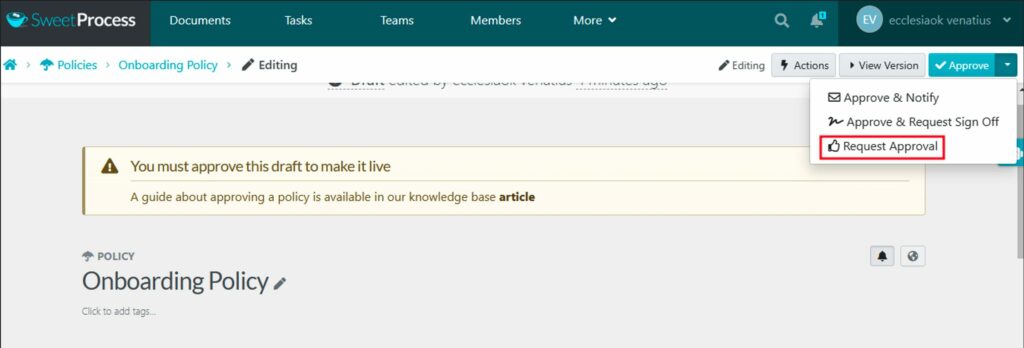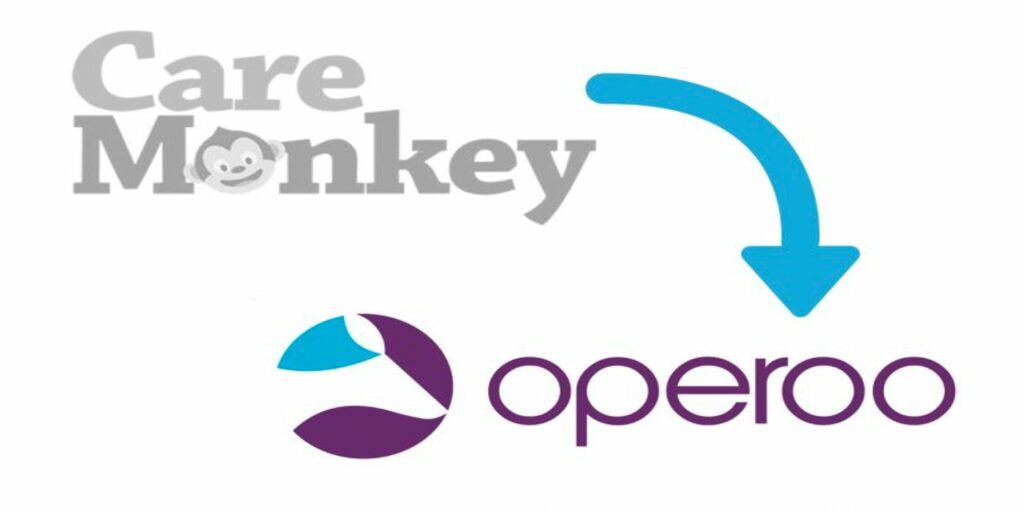Last Updated on March 13, 2025 by Owen McGab Enaohwo

Think back to when you first started expanding your business operations. You likely explored offshoring, attracted by the potential cost savings, only to encounter challenges like time zone differences, communication breakdowns, and logistical delays. Now, imagine a solution that offers the best of both worlds: cost-efficiency and operational control. That’s the power of nearshoring!
Nearshoring combines the benefits of offshoring with the convenience of geographic proximity, offering businesses a streamlined approach to outsourcing. By moving operations to neighboring countries, companies can enjoy seamless communication, reduced travel burdens, and tighter oversight—all while maintaining competitive costs.
Nearshoring strikes a balance between offshoring and managing everything in-region, making it an ideal solution for growing businesses. It offers many benefits, such as time-zone alignment, cultural similarities, and quicker turnaround times. But is nearshoring the right fit for your business?
SweetProcess is here to help you navigate this decision by enabling you to document, manage, and streamline business processes effectively—regardless of where your teams are located.
Don’t miss out on optimizing your operations; sign up today for a free trial of SweetProcess!
What You’ll Learn In This Guide:
How Nearshoring Can Benefit a Growing Company
6 Common Industries Suitable for Nearshoring
How to Streamline Your Company’s Nearshoring Program With SweetProcess
How to Implement Nearshoring for Your Business
7 Successful Nearshoring Examples to Learn From
Drawbacks of Nearshoring for an Organization
Nearshoring vs. Other Business Approaches: How They Differ
How to Know if Nearshoring Is Right for Your Business
Manage Your Nearshore Team Effectively Using SweetProcess
What Is Nearshoring?
Nearshoring is outsourcing business processes, such as IT services or manufacturing, to suppliers or partners in neighboring or nearby countries. Unlike traditional offshoring, which involves distant regions, nearshoring maintains close geographical proximity.
Leveraging geographical proximity is a strategy to optimize operations, reduce risks, and stay competitive. This approach minimizes time zone challenges, travel delays, and cultural misunderstandings while still providing cost-effective solutions.
In practice, nearshoring benefits businesses from shorter supply chains, easier communication, and quicker logistics. For example, a US company might nearshore its software development to Mexico City, taking advantage of lower labor costs without the complexities associated with working across vastly different time zones.
According to Capterra research, 74% of SMB supply chain professionals are actively seeking nearshore suppliers. This growing trend reflects the benefits of nearshoring, which helps businesses strategically redesign their supply chain management to meet today’s demands for speed, efficiency, and flexibility.
Deciding whether to nearshore depends on your company’s unique needs and priorities. If communication, oversight, and faster turnaround times are crucial, nearshoring might be the perfect fit. On the other hand, if reducing costs is your primary goal, traditional offshoring may still be worth considering.
How Nearshoring Can Benefit a Growing Company
Cost Savings

Nearshoring offers major cost savings by outsourcing operations to nearby regions with lower labor costs while avoiding the hidden expenses associated with offshoring. Reduced travel, shipping, and communication expenses mean you can achieve efficiency without compromising on quality. For example, many US companies are nearshoring to Mexico to snag these lower costs and sweet trade deals under the United States-Mexico-Canada Agreement (USMCA).
Proximity and Cultural Affinity
Working with teams in nearby countries often means fewer cultural similarities and language barriers. Shared business customs and similar work ethics promote smoother collaboration and fewer misunderstandings, ultimately enhancing productivity and team cohesion.
Access to Skilled Talent

Nearshoring connects you with a pool of highly skilled professionals who may be more affordable than domestic labor. Many nearby countries boast thriving tech hubs and specialized industries, making finding the talent you need to drive growth easier. For example, Poland has emerged as a popular nearshoring destination for Western & Eastern Europe, thanks to its world-class education system and abundant tech talent.
Time Zone Alignment

Having your teams in the same or similar time zones allows real-time collaboration. This minimizes delays, improves responsiveness, and enables a seamless project management process, boosting overall efficiency.
Enhanced Control and Oversight
Nearshoring’s geographical closeness makes it easier to visit partners frequently. Regular oversight allows you to maintain quality control, build stronger relationships, and address issues promptly, ensuring projects stay on track.
Regulatory and Legal Alignment
Countries that are geographically close often share similar regulatory standards and business practices. This simplifies compliance, reduces legal risks, and ensures smoother integration of processes across borders.
Save Energy and Time
Shorter travel distances mean fewer disruptions and less time spent on logistics. This allows your team to focus more on core business functions, improving productivity and decision-making efficiency.
Ease of Communication

Nearshoring minimizes language barriers and communication delays. The ability to communicate in real-time and share feedback promptly improves workflow, reduces errors, and accelerates project timelines.
Simplified Logistics Management

Nearshoring reduces the complexities of supply chain management. Shorter transit times, lower shipping costs, and fewer supply chain disruptions make managing inventory easier and ensure timely deliveries.
Flexibility
Nearshoring provides the flexibility to scale operations quickly. The proximity and ease of collaboration allow businesses to adapt to changing market demands without the limitations associated with offshoring.
Onboarding and workflow management shouldn’t be complicated. SweetProcess makes it easy to document, manage, and optimize your processes for nearshoring success. A 14-day free trial can redefine your experience on seamless collaboration and efficiency—no credit card required.
6 Common Industries Suitable for Nearshoring
Software Development

Nearshoring is a great fit for software development teams. Many US and European companies partner with developers in Mexico, Canada, Poland, and Ukraine to maintain seamless communication and quicker project delivery, respectively. For instance, a US tech company might nearshore to Costa Rica and Mexico, a growing tech hub known for its skilled developers and favorable time zones.
Customer Support

Customer support is one of the most commonly outsourced services. With nearshore, businesses save costs and resources that should be used to train offshore outsourcing customer reps. Businesses that rely on customer service can benefit greatly from nearshoring. Examples of companies that delegate customer support services include Amazon, Uber, and IBEX.
Back Office Functions
Administrative tasks like data entry, payroll, and accounting can be done nearshore in nearby countries to reduce operational costs. A US firm might nearshore back-office functions to Costa Rica, known for its bilingual workforce and strong infrastructure for business services.
Manufacturing

Nearshoring manufacturing processes helps companies stay agile and responsive to demand changes. For example, many US automotive companies manufacture parts in Mexico, benefiting from reduced transportation costs, times, and favorable trade terms under the USMCA. According to the International Trade Association, 76% of imported cars in the US are from Mexico, with GM, Nissan, and Volkswagen leading in nearshore outsourcing.
Marketing
Nearshoring creative services like digital marketing and content creation can enhance collaboration and efficiency. A European business might work with marketing agencies in Portugal, benefiting from cultural understanding and creative synergy.
Research and Development

Nearshoring R&D allows for more cohesive innovation cycles. A pharmaceutical company in Germany might nearshore R&D to Poland, where skilled researchers provide quality work with fewer logistical hurdles compared to more distant locations.
How to Streamline Your Company’s Nearshoring Program With SweetProcess
Document Repetitive Tasks in One Place
With SweetProcess, you can document and connect all your processes and procedures to relevant policies.
Sign up here to create your first document in SweetProcess at no cost.
Select “Procedures” from the top menu, then click “Create Procedure” in the upper right corner. Add a name and description for your new procedure by clicking on it.


At this point, you have two options to continue:
Click “Continue” to open the document editor and break down your workflow into individual steps. You can add text, decisions, or an end step for each step. Enhance your instructions by including images, videos, and attachments to ensure clarity and completeness.

SweetProcess offers formatting tools like headings, bullet points, and numbered lists to help you organize your content into a clear, easy-to-read structure. This approach gives you full control over your procedure, letting you add specific details and media tailored to your workflow.
Alternatively, you can leverage SweetAI, the built-in AI assistant, to automatically generate procedures based on your input. To use SweetAI, simply click “Write with SweetAI” after entering your procedure title.

SweetAI will generate a draft procedure for you, complete with steps and formatting based on your input. This feature is perfect for quickly creating an initial version of a procedure, which you can easily fine-tune later. Thanks to SweetAI’s natural language processing, you get clear, concise, and well-structured procedures with minimal effort.
Turn Procedures and Processes Into Actionable Tasks
After documenting your procedure, you can assign it to nearshore team members or departments for easy execution. SweetProcess simplifies access and permissions, making task management seamless.
Here’s how to assign a task:
- Open the relevant procedure.
- Click on “Related Tasks” in the left-hand menu.
- In the pop-up, select “Assign Task” and choose the team member.

Turn Existing Procedures and Policies Into a Beautiful Knowledge Base
SweetProcess lets you create a centralized knowledge base by turning your existing procedures and policies into a beautiful knowledge base to efficiently onboard and train new hires and current employees. Here’s how:
- On the main menu, select the “More” button.
- Then click on “Knowledge Bases” on the drop-down menu.

- Add a title for your knowledge base.
- On the next tab, include a public URL for easy access, name categories, and set access permissions.

Manage Procedures, Processes, and Policies
Policies provide guidelines on how processes and procedures should be carried out and are, therefore, very important to the operations of any businesses going into nearshoring. Here is how you can leverage SweetProcess to achieve this:
1. On the SweetProcess home page, click on the “More” drop-down button and select “Policies.”

2. Next:
- Click the “Create a new policy” button to create your policy from scratch.
- Or click the drop-down button at the top-right corner (beside “Create Policy”) and click on “Upload document” if you already have your policy in a Word document (.DOCX).

3. Next, enter your policy title and add the policy to teams and folders. Next, click on “Continue” to get to the editor or use SweetAI to write the document based on the title you provided. You can also use SweetAI’s suggested policy for business options.

4a. If you use SweetAI to write your policy, you get something like this (generated based on the title “Recruiting”):

4b. If you click “Continue” instead, you’ll be taken to the policy page, where you can edit the policy to add content.

On the policy page, you’ll see a prompt offering SweetAI’s assistance in drafting your policy. This option is perfect if you don’t have content ready yet—simply fill in the blanks of the AI-generated draft.
5. However, you can skip the prompt if you already have your policy content.
6. Just click “Click here to edit policy content” to open the editor and write or paste your content directly.

You can enhance your policy in the editor by adding pictures, videos, links, and tables. You can embed a video directly on the page or attach an external file to give more context.
7. Once satisfied with the content, click the “Save changes” button to save your work.
8. To finalize the new policy, it needs to be approved. Just click the “Approve” button at the top-right corner of the screen.

You can approve the draft automatically if you’re a team manager or super manager. If you’re not, you’ll need to request approval. The person with the appropriate authority can then access the policy and give the final approval.

Following these steps, you can manage documents, including policies, procedures, and processes, in SweetProcess. After saving your policy, procedure, or process in SweetProcess, managing it is straightforward. To edit, share, duplicate, export, or delete a document, click the three dots next to the process name and select the action you need.
Set up Teams to Reflect Your Company Culture
Here are the steps to set up nearshore teams across the border in SweetProcess to reflect your company structure:
1. On the SweetProcess home menu, go to the “Teams” segment and click “Create Teams,” then enter the team’s name and write a befitting description. Click on “Create Team.”

2. Then specify the role they are to carry out or give it a title, then click “Confirm.”

3. Select or add a member or members to the team and click on “Confirm” to save changes.

Case Study 1: How Preferred Home Services Streamlined Operations With SweetProcess

Preferred Home Services, a leading plumbing, HVAC, and electrical service provider based in Charleston, SC, is known for its top-tier service and strong regional reputation. With a growing team of over 200 employees, including many working remotely, the company faced challenges in maintaining effective communication and consistent operations across departments.
Preferred Home Services adopted SweetProcess to address these challenges, transforming their operations by documenting and standardizing key processes. By using SweetProcess to create clear, step-by-step guides, the company was able to streamline employee onboarding, improve training, and reduce time spent searching for information. Employees could now easily access the needed resources, allowing them to work more independently and efficiently. As a result, Preferred Home Services improved productivity, reduced errors, and empowered its team to focus on higher-priority tasks, leading to a more efficient and scalable business operation.
Case Study 2: How Operoo Streamlined Operations With SweetProcess

Operoo, an Australian-based provider of school automation services, helps institutions streamline paperwork by converting it into electronic formats. With a growing team and a need to scale its operations efficiently, Operoo faced challenges in managing the increasing number of processes across various departments, such as HR, onboarding, sales, and customer support. Troy Westley, the CEO, found himself spending a significant amount of time explaining tasks and processes to new employees, which slowed down productivity and hindered the company’s growth.
To address these challenges, Operoo implemented SweetProcess to document and standardize their business processes. By creating clear, step-by-step guides, Operoo transformed its onboarding procedures, quality assurance, and employee training. Employees can now easily access the resources they need, reducing the need for Troy to micromanage every task.
This allowed the company to scale operations more effectively, improve team consistency, and empower employees to work independently.
Using SweetProcess improved Operoo’s business process efficiency, reduced errors, and increased overall productivity. The company was able to onboard new employees more quickly, maintain high-quality standards, and expand its operations globally. SweetProcess played a pivotal role in helping Operoo streamline its operations, allowing it to focus on scaling the business and entering new markets.
By embracing SweetProcess, Operoo overcame the operational bottlenecks hindering its growth. The company is now able to scale, onboard employees faster, and ensure high-quality operations worldwide. You, too, can replicate their success by signing up for a 14-day free trial of SweetProcess and streamlining your business processes.
How to Implement Nearshoring for Your Business

Define Your Objectives
The first step in implementing a nearshoring strategy is to define your objectives clearly. This involves identifying specific business functions that you wish to outsource and the outcomes you expect from this transition. Key considerations include:
- Lower Cost: Determine how much you aim to save and in which areas.
- Access to Talent: Specify the skills or expertise you need that may be lacking in your current workforce.
- Operational Efficiency: Consider how nearshoring can streamline processes or improve service delivery.
Establishing these objectives will provide a roadmap for your nearshoring efforts and ensure alignment with your overall business strategy.
Evaluate Potential Nearshore Destinations
Once your objectives are set, evaluate potential nearshore locations based on several critical factors, such as the availability of a skilled labor pool, the cost of operations, and the political stability of the region. Additionally, cultural compatibility and language proficiency should be considered, as these elements can significantly influence collaboration.
Choose the Right Partners

Selecting the right partners is crucial for a successful nearshoring strategy. Look for organizations that have industry expertise and a proven track record in similar projects. Assess their cultural alignment with your business values, as this can facilitate smoother collaboration. Conducting preliminary discussions can provide insights into their capabilities and willingness to adapt to your specific needs.
Establish Effective Communication Channels
Effective communication is essential in any outsourcing arrangement. To foster collaboration, leverage technology by utilizing communication tools such as video conferencing platforms and task management software. Schedule regular meetings to discuss progress and address any challenges that may arise. Also, cultural sensitivity training should be implemented for both teams to enhance mutual understanding and cooperation.
Monitor Performance and Evaluate Results

Once operations are underway, continuous monitoring is essential. Establish key performance indicators (KPIs) that match your set objectives to track progress effectively. Regular evaluations will help identify areas for improvement and inform necessary adjustments.
7 Successful Nearshoring Examples to Learn From
Toyota Motors
Toyota has effectively utilized nearshoring by establishing manufacturing facilities in Mexico, Thailand, India, and Indonesia. This move allows the company to benefit from lower labor costs while maintaining close proximity to its main market in the US and Asia.
McDermott, Will & Emery Law Firm
In 2018, the law firm McDermott, Will & Emery partnered with Pixel506, a Costa Rica–based software company, to help them create a web platform that would incorporate the law firm’s new branding strategy. The website was honored as the number one Global Legal Website by AM Law Global Website Report.
Inditex
Inditex, the parent company of Zara, has, over the years, implemented nearshoring by manufacturing a major part of its clothing in nearby countries such as Spain, Portugal, and Morocco. Zara used nearshoring to reduce order-to-delivery lead time to stores and created a flexible supply chain.
Whirlpool
Whirlpool, the home appliances giant, moved much of its operations into Mexico, and today about 80% of stoves, washing machines and refrigerators are exported to the US from Mexico. Other players in the home appliances market, like Samsung and LG, have followed suit.
Boeing
The aerospace giant outsourced its wiring to French multinational company Safran Electrical & Power, which operates an aircraft wiring plant at Chihuahua, in Mexico. The company, as of last year, produces about 95% of all the wiring on Boeing’s 787 Dreamliner.
Parkdale Mills
At the peak of the pandemic, Parkdale’s supply chain was strained, forcing it to move closer to home. It invested $150 million in building a new yarn-spinning facility in Honduras, shifting 1 million pounds of yarn a week out of supply chains in Asia.
Fexco
Fexco, a global fintech and business services provider based in Ireland, contracted Zartis to build a nearshore development team to help them achieve their goals.
Drawbacks of Nearshoring for an Organization
Knowing the Target Market (Economically and Culturally)
Understanding the economic conditions and cultural nuances of a nearshore location is crucial. Missteps here can lead to miscommunications, inefficient workflows, or marketing failures. Researching local customs, work ethics, and consumer behaviors can help you integrate into the new environment better. Partnering with local experts can also reduce the learning curve.
What Delays to Expect
Even with nearshoring, delays can happen due to logistical issues, infrastructure challenges, or supply chain disruptions. Having contingency plans, backup suppliers, and clear communication channels can help minimize the impact of these delays on your operations.
Identifying Potential Partners With Specific Characteristics
Finding the right partner with the required skills, reliability, and industry experience can be challenging. Conduct thorough vetting processes, including site visits, audits, and references, to ensure you collaborate with dependable partners who align with your company’s standards and values.
Possessing Risk Management Skills
Nearshoring comes with risks like economic instability, political changes, or natural disasters. Develop a solid risk management strategy by identifying potential risks and creating mitigation plans. Ensure your team is equipped to address issues promptly to keep projects on track.
Management of Joint Ventures or Similar Projects
Managing joint ventures or partnerships can be complicated if roles and responsibilities aren’t clearly defined. Establish clear contracts, communication protocols, and performance metrics to ensure all parties are aligned and expectations are met.
Having the Right Budget for Your Nearshoring Project
Nearshoring may not be as cheap as traditional offshoring, and unexpected costs can arise. Create a detailed budget that accounts for everything from labor to logistics and includes a buffer for unforeseen expenses. Regularly review spending to stay on track.
What New Laws and Regulations Will You Have to Navigate

Different regions have different labor laws, tax requirements, and trade regulations. Ignorance of these can lead to fines or operational halts. Consult legal experts to understand compliance requirements and ensure your processes meet local regulations.
Will the New Site Be Able to Meet Your Production Standards?
Ensuring quality control can be difficult if the nearshore facility doesn’t meet your standards. Regular inspections, audits, and quality assurance protocols are essential to maintaining consistency in production. Clearly document standards and expectations for all teams involved.
Nearshoring vs. Other Business Approaches: How They Differ
Nearshoring vs. Offshoring
Nearshoring and offshoring involve outsourcing to external partners, but the key difference is location. Nearshoring means outsourcing to neighboring or nearby countries, such as a US company working with a partner in Mexico. In contrast, offshoring refers to outsourcing to distant countries, like India or the Philippines.
Nearshoring vs. Onshoring
Onshoring is the practice of keeping business processes within the same country, while nearshoring involves outsourcing to a nearby country. While onshoring ensures greater control, easier communication, and fewer regulatory issues, it tends to be more expensive due to higher labor costs.
Nearshoring vs. Outsourcing
Outsourcing is a broad term that covers delegating business tasks to third parties, regardless of location. It can include onshoring, offshoring, or nearshoring. Nearshoring is a specific form of outsourcing that focuses on partnering with companies in nearby countries.
Nearshoring vs. Reshoring
Reshoring is the process of bringing outsourced operations back to the home country. While nearshoring maintains operations close but still outside national borders, reshoring keeps everything domestic. Nearshoring offers a middle ground, providing some cost benefits while maintaining proximity and oversight.
Nearshoring vs. Maquiladora
A maquiladora is a specific type of nearshoring practice where US companies set up factories in Mexico to benefit from lower labor costs and favorable trade policies, such as those in the USMCA. Unlike general nearshoring, which can include various industries and partners, maquiladoras are primarily used for manufacturing and assembly.
How to Know if Nearshoring Is Right for Your Business
Proximity
Consider how close you need your operations to be for effective communication and oversight. Nearshoring works well if you want partners in similar time zones, real-time collaboration, and easier travel for in-person meetings.
Cost Analysis
Evaluate how nearshoring fits into your budget compared to onshoring or offshoring. While nearshoring may be less expensive than offshoring to distant countries, it often offers a good balance of cost savings and operational control. Factor in travel expenses, potential tax benefits, and the overall return on investment to decide if nearshoring makes financial sense for your business.
Skill Availability
Assess whether the nearby regions you’re considering have the talent pool and skills your business needs. Nearshoring can be a great option for industries like software development, manufacturing, and customer support. Ensure the workforce in the target region meets your quality standards and offers the expertise necessary for your projects.
Regulatory Environment
Research the regulations, labor laws, and trade agreements in potential nearshoring destinations. Countries with favorable business environments and trade deals, like the USMCA between the US, Canada, and Mexico, can simplify compliance and reduce operational headaches.
Risk Assessment
Identify potential risks associated with nearshoring, including political stability, economic conditions, and supply chain reliability. Nearshoring reduces some risks tied to long-distance offshoring, but it’s still important to have a business continuity plan in place.
A well-structured plan ensures that your company can quickly adapt to disruptions, maintaining operational stability and minimizing downtime. Weigh these risks against the benefits to make informed decisions.
Manage Your Nearshore Team Effectively Using SweetProcess
Nearshoring offers a smart way to cut costs, improve collaboration, and maintain quality by working with teams closer to home. The benefits are clear: better communication, faster turnaround times, and smoother operations, thanks to cultural and similar time zone alignment. But to fully leverage nearshoring, you need the right tools to keep everything organized and running smoothly.
SweetProcess simplifies the management of your nearshore team by helping to document workflows, assign tasks, and create a centralized knowledge base. Whether it’s streamlining onboarding, improving task delegation, or keeping policies and procedures up-to-date, SweetProcess makes managing your team effortless and efficient.
Managing a nearshore team doesn’t have to be complicated. Let SweetProcess simplify your workflows, tasks, and knowledge base so you can focus on growth. Test drive our tool to see it in action.

